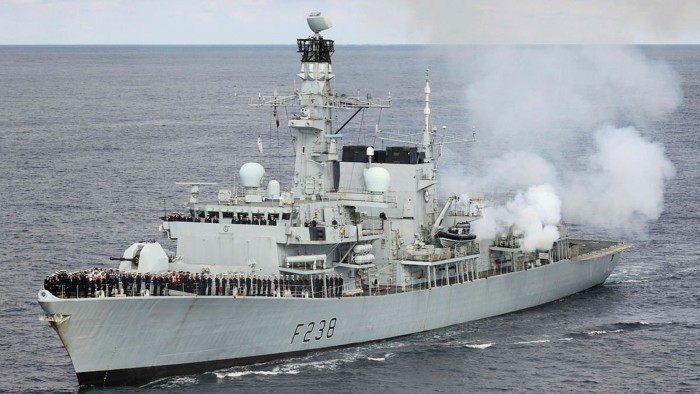Unlock the Editor’s Digest for free
Roula Khalaf, Editor of the FT, selects her favourite stories in this weekly newsletter.
The UK will retire ageing helicopters and sea vessels under plans to save £500mn in the coming five years, defence secretary John Healey has said.
The targeted equipment includes the Type 23 frigate HMS Northumberland, which had been due to undergo a now-halted refit and will leave the fleet next year, the troubled 14-year-old Watchkeeper drone programme, two amphibious assault vessels, plus 17 Puma helicopters and 14 of the military’s fleet of about 50 Chinooks.
Healey blamed “hundreds of unfunded pressures” facing the UK’s defence budget and the changing nature of warfare for the “difficult decisions”.
“These are common sense decisions which . . . will secure better value for money for taxpayers and better outcomes for the military,” he told the House of Commons.
Britain’s Labour government has said it has a “cast-iron commitment” to spend 2.5 per cent of GDP on defence, compared with 2.3 per cent currently, but has not specified when that will happen. In the meantime public finances are being squeezed by other priorities, such as health and education.
British military chiefs said they backed the move. Admiral Sir Tony Radakin, the head of the British military, said: “Our focus now must be to see through the modernisation across the armed forces so we become even more lethal and responsive. Accelerating the disposal of legacy equipment is the logical approach.”
General Sir Roly Walker, head of the army, said: “All warhorses have to go out to pasture at some stage . . . Warfare is changing and we need to think and act differently, including having the courage to retire the legacy with dignity and respect.”
The head of the Royal Navy, Admiral Sir Ben Key, also put a brave face on the decision, which will see the navy lose a frigate and two amphibious assault ships, HMS Albion and HMS Bulwark. Two oil supply tankers, RFA Wave Knight and RFA Wave Ruler, both over two decades old, will also be retired. All five ships have already been inactive for some time.
“The navy is committed to our continued programme to modernise ,” Key said. “To deliver this change, we must divest in old capabilities to make way for this future.”
The loss of two amphibious assault ships is controversial given that the previous government backtracked on plans to scrap them earlier this year.
Healey said he had spoken with Nato allies about the changes, and that keeping what were in effect obsolete ships in service far beyond their original service date made no sense.
“We must have the self-confidence to make the changes required,” Healey said.
James Cartlidge, the shadow defence secretary, said the government was “scrapping capabilities just as the threats to our nation are growing”.
John Foreman, the UK’s former defence attaché to Moscow, said some of the vessels were being retired due to lack of sufficient personnel rather than their age. Foreman said “it was desperate stuff” that the MoD was prepared to cut them to make some modest financial savings given the current international environment.
The changes come ahead of a broader root and branch review of the British armed forces due to be published next year.
Read the full article here

